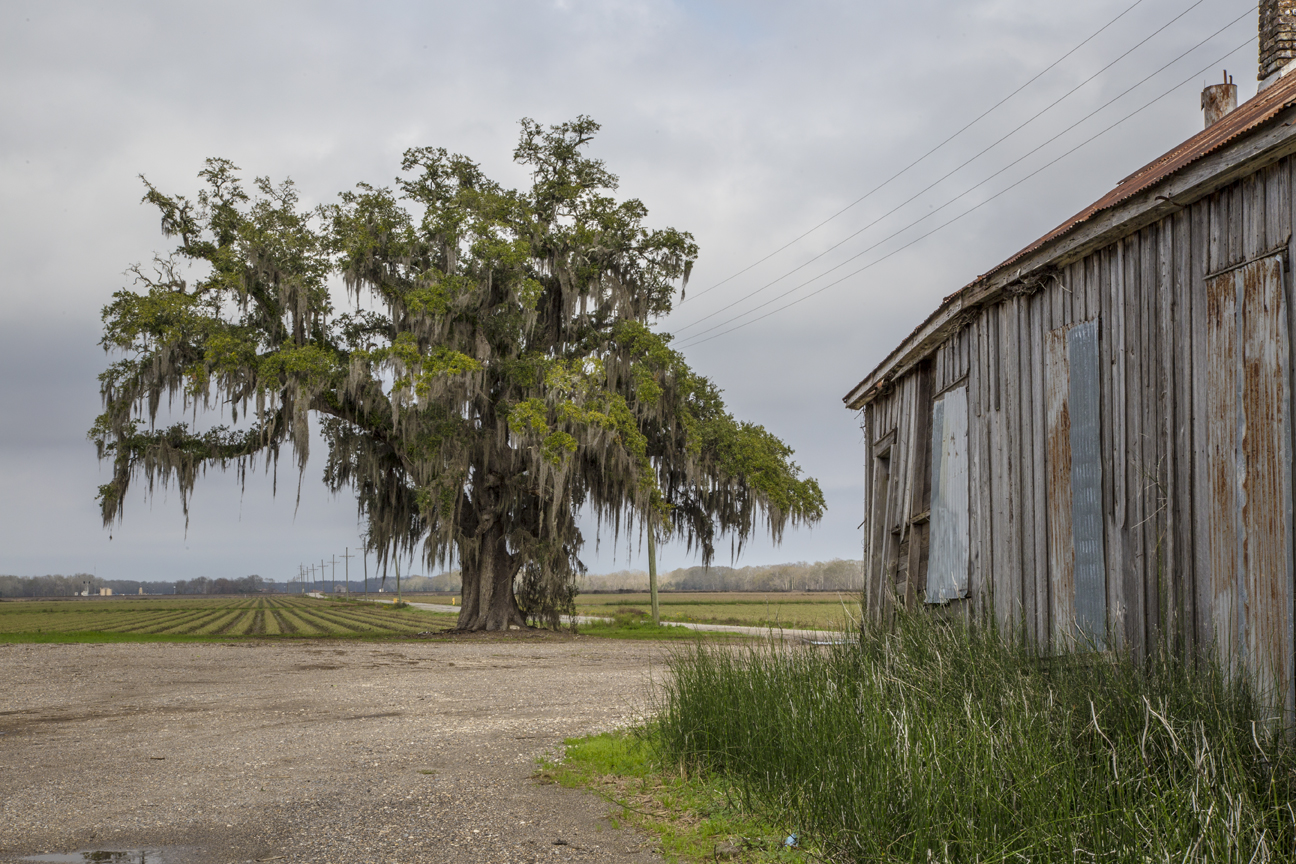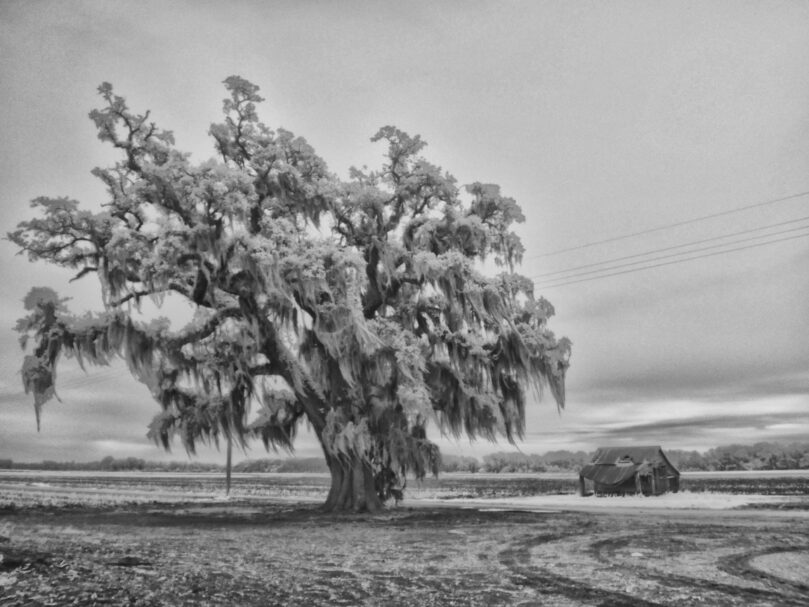(The Melodia Plantation Oaks are located on the east side of LA Hwy. 308 (not the bayou side), approximately 1/4 mile past the Webre Oaks, approximately 6.25 miles south of downtown Thibodaux, and 9 miles north of Raceland. You are still within the community of St. Charles.)

The Melodia Oaks are probably the least beautiful trees on the Live Oak Tour. Most visitors passing along Hwy 308 would notice the dilapidated buildings near the oaks and simply wonder what was once there. I’m including them because of the historic connection between Melodia and Laurel Valley Plantation, which is farther north on Hwy. 308 and about 2 miles from Thibodaux.
According to one local resident, the two weather-worn structures you see in front of the oaks are what is left of school houses. In the heyday of sugar plantations in the 1800s, they were filled with young children from Melodia Plantation and the surrounding area.

Laurel Valley is one of the largest nineteenth-century sugar plantation still intact in the country. The two plantations, Melodia and Laurel Valley, were owned by Frank L. Barker (who lived at Clotilda Plantation below Raceland) and J. Wilson Lepine in the latter part of the 1800s, and the two properties were joined by railroad tracks and two working steam locomotives, enabling them to share one sugar mill (at Laurel Valley). The two locomotives, the Melodia B. and the Maud L. carried cut cane from Melodia to the Laurel Valley mill where it was processed and refined into sugar and molasses. From Laurel Valley, barrels of refined sugar and molasses were hauled back toward Melodia and on to New Orleans markets via the Melodia switch, a spur that gave the inter-plantation track access to the larger Southern Pacific Railroad line. Today, the Maud L. is still alive and chugging at Disneyland in Southern California, and Melodia B. is the hospitality operations train at the Santa Margarita Ranch, also in California.
Driving from Thibodaux , you will see the Laurel Valley Store and Village at 595 LA Hwy 308, right past the Laurel Valley Bridge. The general store is open to the public and guided tours are available. Surrounding the store, you’ll see old wooden houses and barns like what you would have found on the plantation in the 1800s. There are displays of tools, tractors, and farm implements used in the cultivation of sugar cane, as well as a steam-operated train similar to the two trains that once carried sugarcane between Melodia and Laurel Valley up until the 1930s.
If you take a turn off of Highway 308 onto Laurel Valley Road and drive 2 to 3 miles, you’ll pass through the remnants of the Laurel Valley community, a group of weathered and worn workers quarters as well as the ruins of the once massive sugar mill. Laurel Valley was added to the National Register of Historic Places on March 24, 1978, and the restoration of the buildings along Highway 308 has been funded through the work of The Friends of Laurel Valley Village, a local non-profit group.
The Lafourche Live Oak Tour was created through the generous support of Louisiana’s Cajun Bayou Tourism. For more information on Lafourche Parish events and activities, visit their website at LACajunBayou.com.


My grandparents lived on Melodia in 1934,his name was John Baye